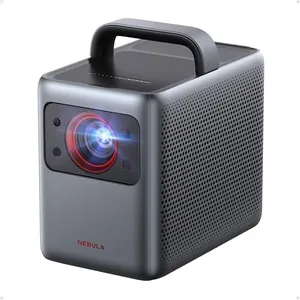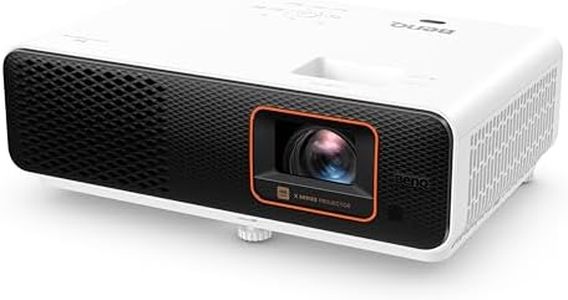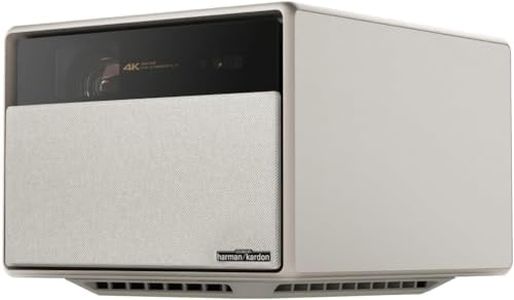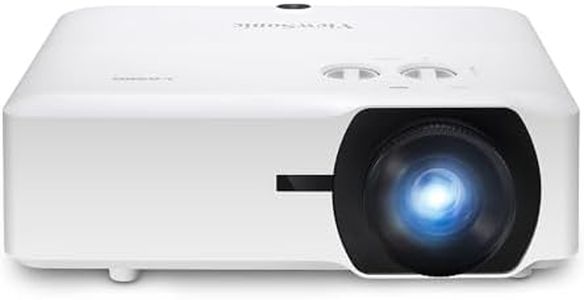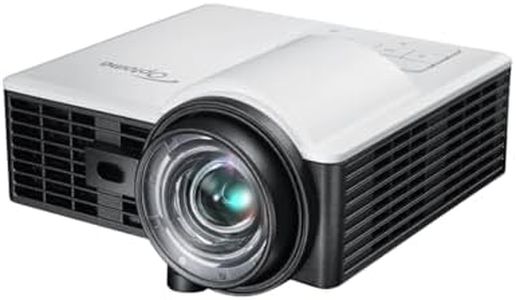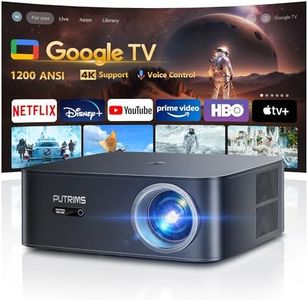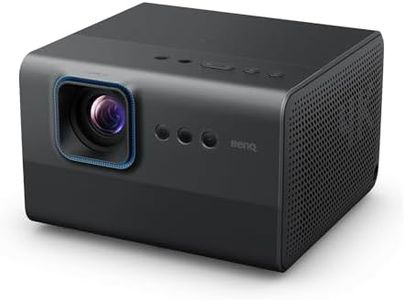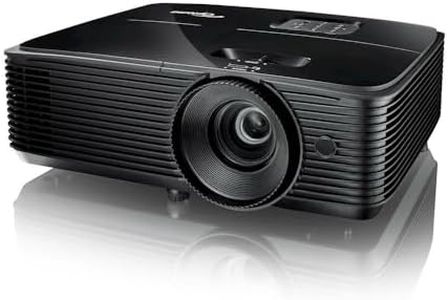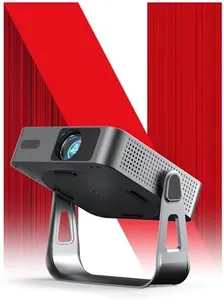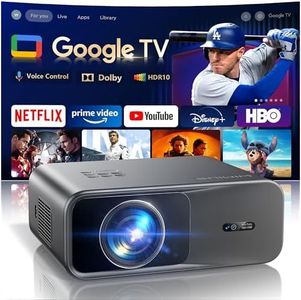We Use CookiesWe use cookies to enhance the security, performance,
functionality and for analytical and promotional activities. By continuing to browse this site you
are agreeing to our privacy policy
10 Best Digital Projector For Artists
From leading brands and best sellers available on the web.By clicking on a link to a third party's website, log data is shared with that third party.
Buying Guide for the Best Digital Projector For Artists
Choosing a digital projector as an artist can enhance your creative process, whether you’re tracing sketches onto large canvases, projecting reference images, or showcasing finished pieces. The right projector should fit your working space, match your brightness needs, and faithfully reproduce the colors and details of your artwork. Think about how and where you will use the projector, such as its portability, setup convenience, and the types of images you plan to project, so your selected model truly supports your artistic workflow.ResolutionResolution tells you how many pixels the projector can display in an image, influencing the level of detail and sharpness you’ll see. For artists, higher resolution is important if you’re working with intricate images or want to ensure your sketches and colors appear clean and clear. Resolutions are commonly marked as SVGA (800x600), XGA (1024x768), 720p (HD), 1080p (Full HD), and even 4K. For simple line work or basic references, entry-level resolutions like SVGA or XGA may work fine. If you’re projecting finely detailed or colored digital art, you may benefit from Full HD or above. Think about how much detail you need to see in your projections and pick the resolution that helps you reproduce your art effectively.
Brightness (Lumens)Brightness is measured in lumens and represents how much light the projector can produce. A brighter projector can handle more ambient light in your workspace and produce clearer images on your canvas or wall. Projector brightness typically goes from under 1000 lumens (best for dark rooms), 1000 to 3000 lumens (good for dim rooms or small projections), up to 3000 lumens and above (suitable for bright environments or large images). If you paint or draw in a well-lit room or want to project large images, select a model with higher lumens. If you’re always in a dim or dark room and work on small surfaces, lower lumens may be just fine.
Throw DistanceThrow distance tells you how far from the surface your projector needs to be to achieve a certain image size. Projectors can be short throw (can project large images from close to the wall), standard throw (require a few meters of space), or even ultra-short throw (can sit very close to the surface). If your art space is small or you want to project directly onto an easel close up, look for a short or ultra-short throw projector. For larger studios or when you have plenty of space, a standard throw projector might suit you. Measure the distance you can devote in your workspace before deciding.
Color AccuracyColor accuracy refers to how true-to-life and vibrant your projected images appear compared to the source. For artists, being able to trust the colors you see is important for tracing, matching paints, or showcasing digital work. Some projectors are tuned for presentations, which can lead to dull or ‘off’ colors, while others emphasize vivid color for video or graphics. If color matters for your projects, look for projectors that mention good color reproduction or offer color calibration options. You might also check for features supporting sRGB or Rec.709 color spaces.
PortabilityPortability describes how easy it is to move and set up your projector. Some projectors are lightweight and compact, even small enough to put in a bag, while others are bulkier and designed to remain stationary. If you often set up in different locations—say, at home, in a studio, or at workshops—a portable projector may suit your needs. If the projector will live in a dedicated spot, portability may matter less. Consider how often and where you’ll use the projector when prioritizing this feature.
ConnectivityConnectivity options reveal what devices you can hook up to your projector. Common connections include HDMI, USB, VGA, or wireless options like Wi-Fi or Bluetooth. Artists often project from laptops, tablets, or even phones, so check if the projector supports your preferred device. Some projectors can display images directly from a USB drive, bypassing the need for a computer. Decide which devices or methods you plan to use and confirm the projector can connect to them for hassle-free setup.
Keystone Correction and FocusKeystone correction is a feature that lets you adjust the image if your projector isn’t perfectly perpendicular to the projection surface, while focus lets you sharpen the image. Both affect image quality—especially if you don't have a dedicated or straight-on setup. For quick setup or when space is limited, look for projectors with good automatic or easy-to-use keystone and focus controls. If you always set the projector in one fixed position, manual controls may be sufficient.
